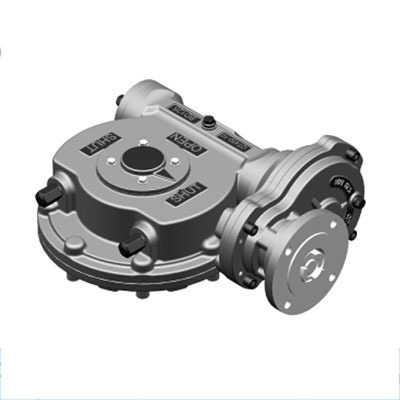Now, let’s discuss how to add lubricating grease to the speed-reducing gearbox and address any noise issues.
Release date:
2022-08-01
Now, let’s discuss how to properly add lubricating grease to the speed-reducing gearbox and address any noise issues. You see, the viscosity and lubrication performance of vegetable oils are sensitive to operating temperatures. Therefore, when selecting a vegetable oil for a gearbox used in a specific ambient temperature, it’s crucial to choose one that maintains the right consistency and delivers excellent lubrication effectiveness under those same temperature conditions.
Now, let's talk about increasing deceleration. Gearbox Methods for lubrication and noise management
Generally speaking, slowing down Gearbox The quality of lubricant grease selection directly impacts the smooth operation and service life of transmission gears. Generally, vegetable oils used for metal applications should offer excellent adhesion and also provide effective rust-prevention properties—after all, rust-proof oils must remain insoluble in water. Additionally, vegetable oils tend to soften over time during equipment operation, potentially leading to leaks. Under normal operating conditions, these oils can even fling off the transmission gears altogether. Gearbox Cavity. If the mechanical equipment used for vegetable oils lacks sufficient reliability, operational conditions can cause the soap-like structure of the vegetable oil to undergo reflective disintegration. Additionally, the viscosity and lubricating ability of vegetable oils are affected by operating temperature—meaning they perform optimally only within a specific temperature range. Gearbox Choose vegetable oils that maintain accurate mortar consistency and deliver excellent lubrication performance at the same temperature.

Slow down Gearbox When a rolling bearing is damaged
Generally, responding to slowdowns Gearbox When the bearing housing is damaged, the typical approach involves offline repairs—methods like applying black spots, electric welding, or laser cladding, which are traditional craftsmanship techniques. While these processes have clear advantages and disadvantages, they often delay cost-saving on-site inspections and repairs. That’s why the company now frequently opts to use Soray carbon nanopolymer materials for field-based repairs. Soray carbon nanopolymer materials leverage the unique physical properties of carbon nanopolymers, combined with a targeted repair process, to restore even large-scale shafts or shaft-hole assemblies—including those found in various types of gearboxes—directly on-site. The repair process is remarkably straightforward: it typically uses the undamaged original standard dimensions to precisely rebuild the damaged areas, restoring the correct bore diameter specifications.
Gearbox Noise Processing
Gearbox It is a critical component widely used in gear transmissions. When two gears mesh, unavoidable deviations in pitch, tooth profile, and other factors can lead to impact during engagement, generating noise at frequencies corresponding to the gear meshing operation. Additionally, frictional noise occurs in the bearing journals due to their relative sliding motion. Since transmission gears are fundamental parts of the gearbox's drivetrain, reducing gear noise is essential for controlling overall gearbox noise levels. Generally speaking, the primary causes of transmission system noise can be attributed to the following key areas:
1. At the sprocket design level: Key parameters are selected unreasonably, resulting in insufficient overlap and either improper or completely absent tooth profile modification. Gearbox Such as improper construction, excessive base pitch deviation and tooth profile error in gear shaft machining, excessively large backlash between teeth, and overly rough surface finish, among other issues.
2. Transmission gear system and Gearbox Levels. Installation axial force issues, low touch precision, poor shaft flatness, insufficient strength in the shaft, rolling bearings, and supports, as well as inadequate rotational precision and improper clearance in the rolling bearings.
3. Other aspects include torque input—such as fluctuations in load torque, torsional vibrations of the shaft system, and the balance condition of the motor and its transmission system components.
Alright, I won’t go into further details—thanks for watching, and we’ll see you again next time!
Latest Updates
Share to
Address: NO.7A BULIDING, ZHUAO IND.ZONE,OUBEI STREET, YONGJIA, 325105,WENZHOU,ZHEJIANG CHINA
Mobile phone:86-15868793566
Phone:86-577-57775050
Fax: 86-577-57779292
Email:boho@china-boho.com



